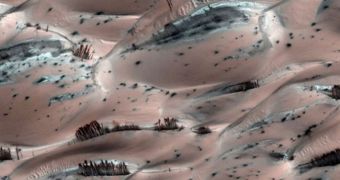According to experts, we may soon become able to detect the presence of things such as forests on other planets outside our solar system. All that is needed for this to happen is for the next generation of astronomical observatories to be installed. This may take as little as a couple of decades.
When these advanced machines go online, there will be little things capable of hiding from them, regardless if they are in the Solar system or on extrasolar planets. Some propose that even forests will become visible to the instruments' keen eyes.
Up until now, we've been able to determine the atmospheric compositions of several exoplanets located in suitable locations, but this trait may become even more extended and widespread in the future.
So why not be able to detect tree-like multicellular life on exoplanets, researchers ask. Indeed, it would seem that there are no reasons to suspect that such features, if they exist, will remain hidden forever.
If we develop this capability, it would represent an enormous leap forward from the currently-proposed technique of searching for life on other planets, which is to look for the spectral signature of biogenic gases in their atmospheres.
Another method used today is analyzing the surface of the exoplanets carefully, in hopes of detecting glints, as starlight bounces off lakes, seas or oceans on these celestial bodies, Universe Today reports.
But the presence of biogenic gas is no indicator that life exists, whereas glints can be generated by hydrocarbon-filled lakes, as evidenced by the ones telescopes observe on the surface of the Saturnine moon Titan.
Carnegie Institution experts Christopher Doughty and Adam Wolf propose that future surveys of alien worlds should be carried out using a type of remote sensing technique called Bidirectional Reflectance Distribution Function (BRDF).
The method is not new, as it has been in use for decades aboard Earth-observing satellites that keep track of crops, land cover, clouds, and atmospheric conditions, among others.
What BRDF does is it determines the reason why surfaces have different reflectance when viewed from multiple Sun and view-angles.
“BRDF arises from the changing visibility of the shadows cast by objects, and the presence of tree-like structures is clearly distinguishable from flat ground with the same reflectance spectrum,” the two say.
“We examined whether the BRDF could detect the existence of tree-like structures on an extrasolar planet by using changes in planetary albedo as a planet orbits its star,” they adds.
Details of their proposal appear in the latest issue of the journal Astrobiology.

 14 DAY TRIAL //
14 DAY TRIAL //